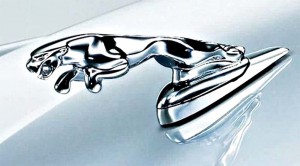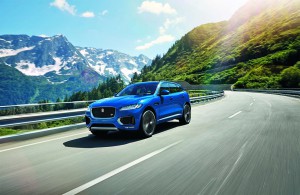Jaguar Land Rover wants to slash nearly $7 billion in expenses even as it launches more products aimed at doubling its global sales by the end of the decade.
The project has been dubbed “Leap 4.5,” a nod to the “Leaper,” the familiar feline logo of the Jaguar side of the company. The 4.5 refers to the 4.5 billion pounds in cost savings targeted by the Indian-owned automaker. That works out to about $6.8 billion at current exchange rates.
The plan does not call for any job cuts, according to a report in London’s Sunday Times, but it would see a slowdown in the aggressive hiring program of recent years. No cuts are planned for JLR’s capital spending budget, either.
A critical element of the cost-cutting program has already been put into place. The majority of future Jaguar products – including the new XE sedan and F-Pace sport-utility vehicle — will share a single global architecture, or platform. That is expected to yield major economies of scale.
(Fundamental transformation underway at Jaguar. Click Here for the full story.)
The Land Rover side of the company is looking for similar economies of scale even as it rapidly expands its own product line-up. The recent launch of an all-new Discovery model anchors a new strategy of offering three distinct product ranges by the SUV brand.
The flood of new products coming from Jaguar and Land Rover will be critical if it is to meet its ambitious sales goals. In 2014, JLR moved 468,000 vehicles worldwide, and the carmaker was targeting 500,000 for all of 2015. It hopes to double that again by 2020.
But the short-term goal could be running into trouble, largely due to the overall slowdown of the Chinese market. JLR sales there slipped 32% between July and September, and it is unclear whether the market will slide even further after years of double-digit growth.
Whether JLR can meet its aggressive cost-cutting target also remains far from certain. New products aren’t cheap to bring to market, never mind a line-up of new offerings as broad as those planned by JLR. So far, the maker has invested 11 billion pounds in its line-up. Along with the F-Space, the maker is reportedly working on as many as two other crossover-utility vehicles, the bigger J-Space and a smaller battery-electric model.
(Click Here for more on the battery-based E-Space.)
Meeting tough new global fuel economy and emissions standards will be particularly challenging for the luxury maker as it has no mainstream brand to help offset the higher-powered luxury vehicles that dominate its line-up.
Meanwhile, the company has been expanding out of its traditional British manufacturing base, with new assembly plants in China, India, Slovakia and Brazil. All told, JLR is putting about 3 billion pounds annual into capital spending, or about $4.5 billion.
India’s Tata Motors acquired JLR from Ford Motor Co. in 2008. The British subsidiary employs 37,000 people worldwide and earned 2.6 billion pounds last year.
(Click Here for a review of the new Range Rover Td6 diesel.)
Officials from JLR had no immediate comment on the report.


